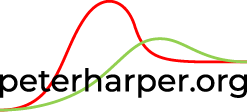Land Use & Agriculture
We have shown in the Zero-Carbon Britain series that a successful decarbonisation programme cannot be achieved without due attention to the food and land-use sector. This is because the sector is both a strong source of GHGs in its existing state and a potential sink if suitably redesigned.
In this section we cannot avoid mention of the other great sustainability issue, biodiversity. It is generally agreed that agriculture and forestry are the largest causes of biodiversity problems, but within agriculture, livestock have a disproportionately large impact.
For both climatic and biodiversity reasons, the need for drastic reduction of livestock is glaringly obvious, but this has a huge cultural and political voltage that many commentators prefer to avoid.
My principle is to go with the evidence come what may, and the ‘livestock question’ keeps recurring in the material here. Critics like to paint this as a misconceived notion of animal welfare, but from my perspective this is irrelevant. The critique is essentially a matter of environmental sustainability.
We created several models of the UK food commodity system that appear superficially complex but are basically very simple and can easily be evaluated and subject to critique -- which of course is welcome.
There is a persistent difficulty in tracing the progress of food commodities through the food chain in a quantitative way. It is difficult to get the raw commodities to match up with the food as consumed. An approximation is given in the following 'Sankey Diagram':
UK production of biomass is at upper left, imports lower left. The small size and apparent wastefulness of the livestock sector is readily apparent. It takes a huge amount of land and other resources to generate a relatively small amount of product. A surprising proportion of biomass in recent years has gone into ‘renewable energy supply’, where it is deemed ‘zero-carbon’.
The low-carbon land-use approach taken in Zero-Carbon Britain generates a number of scenario variants, but they all share a great reduction of grazing livestock, releasing grassland for alternative, non-food uses. Loss of food production is more than made up by release of arable land no longer required for livestock feed. To those for whom this approach is novel, the scenarios might come across as bizarre and shocking. But there appears to be no other approach consistent with meeting the requirements of 'fairness and physics'. Criticism is of course necessary and welcome, but so far no critic has succeeded in demonstrating a flaw in the reasoning or calculations.
Here the approach is summarised in three different formats.
Land Use in Zero-Carbon Britain 2013 (doc)
Low-Carbon Land Use 2013 (ppt)
Food and Land Use Modelling Spreadsheet 2013 (Excel)
The last item, a spreadsheet, lays out a basic model that can be examined in every detail, and gives references. It is fully active, and allows users to model scenarios of their own in column Z. It is briefly explained in an interview conducted in 2018:
Interview with Simon Fairlie for The Land (2018, Word)
I am an admirer of the great Simon Fairlie, editor of The Land, but we do not always see eye to eye. Normally he is happy to publish my submissions, but the following item was rejected, not on account of its quality, but its content. Shame on him.
Can Grazing Livestock be Carbon Negative? 2019
One of the acknowledged uncertainties of the ZCB scenarios is the fate of sequestered photosynthetic carbon. One attractive possibility is to maximise the use of biomass in the physical fabric of the economy, particularly buildings. This has not been deeply studied, but some of the issues are explored in
Building Materials Derived from Biomass 2011 (doc)
In 2002 and 2003 I carried out some collaborative work on the use of aerobic ‘compost tea’ for treatment of late blight in potatoes. The results were negative, and many other researchers also obtained negative results, but these important results were never acknowledged by the organic movement, suggesting some serious flaws in evidential assessment.
A trial of compost tea as a treatment for potato blight. 2023
Since 2017 I have had the pleasure of ‘looking after’ a wildflower meadow belonging to the Wiltshire County Council in Corsham. I manage it using a scythe, a hay-rake and various mowers. The contractors who installed it did not bother to remove topsoil, with the result that grasses strongly dominate over the wildflowers we really want. But over many years of mowing, things are starting to improve:
The Meadow 2017-2023
THE TRIALS OF DAISY THE COW
In 2017 I developed a political theatre event jointly with the playwright Sarah Woods. Its point was to highlight the arguemnts for and against the continued role of livestock in the agriculture sector. It involved a Crown Court trial of a pantomime cow, complete with judge, jury, barristers and expert witnesses. By the end of 2022 Daisy had had eight different productions, some of which are described here
The Trials of Daisy the Cow (2018, Word)


